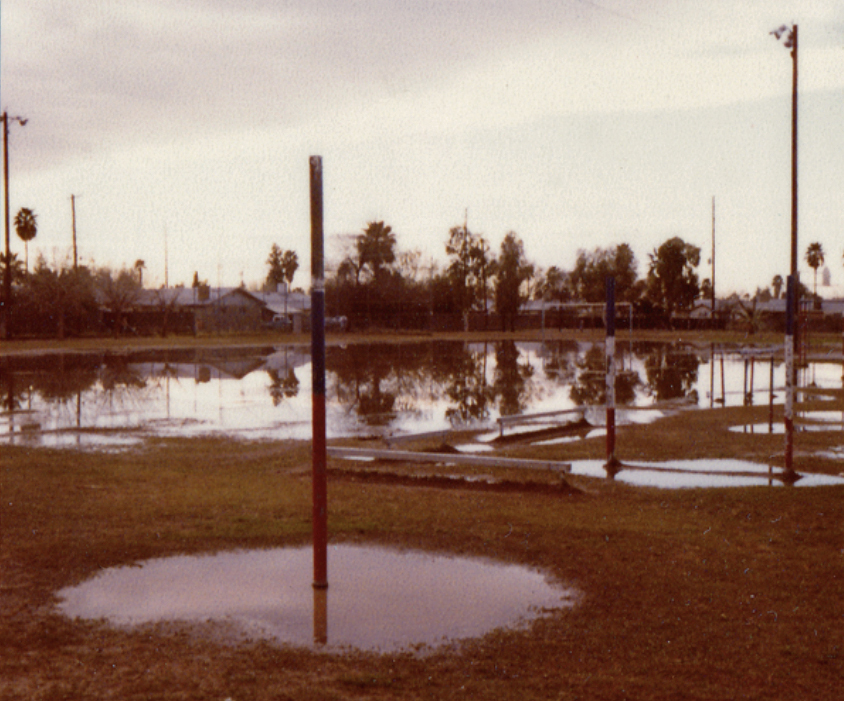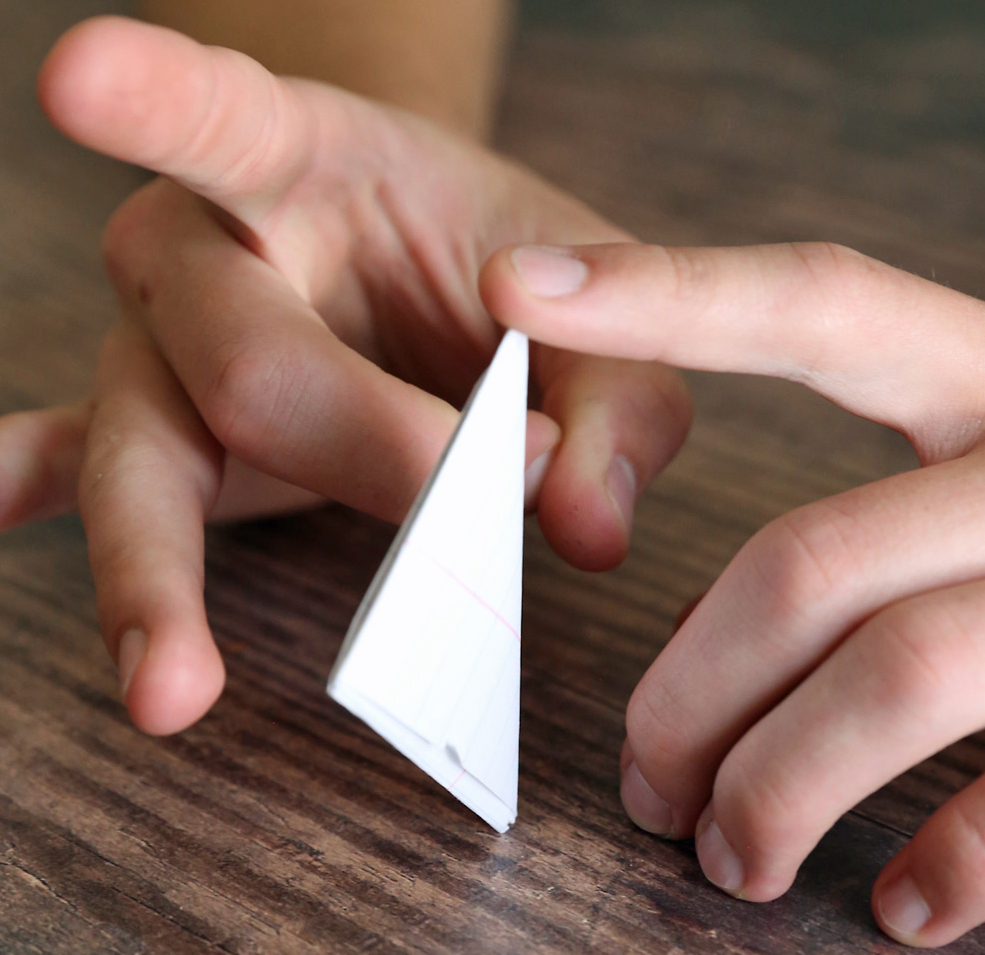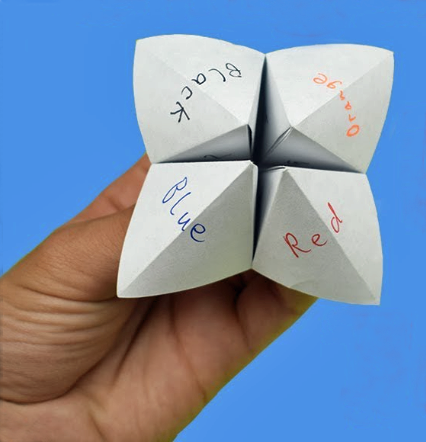|
Page A3 / The Joan
De Arc Crusader / Saturday, December 24, 2022
Front Page
A1
/
Editorials A2 /
Food
A4 /
Crossword
A5

Undampened
spirits: The “Rainy Day Schedule” at Sahuaro
By J. Bueker
For the very
reason of their conspicuous infrequency, rainy days at Sahuaro School were
distinctively memorable occasions.
Never shall I
forget the days immediately preceding Christmas vacation my fifth-grade
year; the rains fell relentlessly that entire week, and by the time we
departed for holiday break, the school playgrounds had all become completely
submerged into exquisitely expansive lakes. I vividly recall a small coterie
of upperclassmen devising ingenious paper watercraft and floating them out
across the placid surface of the engulfed playing fields, an impressive sight for a ten-year-old in 1968, I
reckon.
engulfed playing fields, an impressive sight for a ten-year-old in 1968, I
reckon.
When those rare rainy days at school did
happen to materialize, profound adjustments to the daily academic routine
became necessary, resulting in the fabled “Rainy Day Schedule” at Sahuaro.
These were school days like no others.
On any
normal school day of course, students would populate the playground before
school and remain there until the bell sounded, at which time we would line
up in formation for our teachers to escort us to our classroom. This
protocol was completely abandoned on a rainy day: upon arrival we were
immediately greeted by urgently repeated school office announcements over
the PA system requiring we report directly to our classrooms, as we would be
unwilling shut-ins for the balance of the day. A handful of faculty members
was typically stationed near the playground entrances to turn away any
students attempting to access that forbidden realm, and so we reluctantly
wandered into our rooms to see what the rainy day would bring.
Being stuck in the classroom before school and during recess was a uniquely
unusual experience, transforming the entire character of the school day.
Most of my classmates ardently rued rainy days at school, as they eliminated
any possibility of fleeing their desks for the great outdoors, but my own
feeling was that spending all day cooped up together in the classroom
created unique opportunities for otherwise unattainable fun at school.
The ultimate orchestration of student activity on inclement days naturally
fell upon the venerable Sahuaro faculty, who suddenly found themselves
obliged to scramble and produce an adequate variety of classroom activities
to fill the void of lunch and recess, at which time we would normally be
outside frolicking on the swings and slides. This presented a challenging
circumstance, both in terms of meaningful instruction and classroom
management, but the more adept instructors at Sahuaro were well prepared and
invariably rose to the occasion admirably.
A
staple of the rainy-day schedule activities at Sahuaro School was the
legendary “Following Directions” handout. The Sahuaro teachers were
evidently quite fond of this mimeographed masterpiece of busy work, as I
encountered it several times during my eight-year sojourn at the school.
Atop the page of the mundane-looking worksheet appeared very simple but
quite emphatic directions for each student to observe: “Read
everything before doing anything. Then work as quickly as possible.”
This curious directive was followed by an excruciatingly long and eclectic
series of seemingly pointless tasks to perform, everything from solving an
arithmetic problem on the back side of the page to drawing and coloring a
random geometric shape. Faced with this lengthy and arduous to-do list, and
limited time to execute it, the vast majority of students would of course
launch immediately into the work, ignoring the clear directions to read
everything first. Those few who did bother to actually follow instructions
would ultimately arrive at the final item on the list, which revealed the
true and nefarious nature of the exercise: “Now that you have carefully read
everything first, only do task #1: write your name at the top of the
page. Then sit quietly and watch your teacher.”
The clever sleight of hand of course was that the “following directions”
theme at first blush appeared to apply to the tediously long list of tasks
on the page, when it in fact was pertinent only to the brief directions
appearing at the top. I myself fell victim to this devious ploy upon my
first exposure to “Following Directions,” probably in third grade or
thereabouts, hurriedly attempting to complete every item before ultimately
realizing my blunder. The “gotcha” at the end of the list packed quite a
punch -- not only had you been caught not following directions, but you had
just frantically worked through about twenty highly annoying activities on
that piece of paper for absolutely nothing. Whoever devised this exercise
was a sadistic genius of the highest order.
After my initiation, I became hip to the entire charade and knew exactly how
to proceed when the “Following Directions” activity came my way again.
Instantly recognizing the document, I would dash my name off at the top of
the page and then sit smugly observing my clueless classmates hurriedly
trying to complete all those silly tasks. Hah, the fools. I’m not sure the
activity instilled in me a life-long ethic for always following written
instructions, the ostensible purpose of the assignment, but it certainly
rendered me somewhat more cynical regarding my teachers’ motives going
forward. In any event, “Following Directions” was unquestionably a useful
device for killing time on a rainy day at school.
Sporting events are a quintessential playground activity for elementary
school students, and rainy days in no way deterred us from pursuing our
beloved athletic events during recess time. Well, sorta.
The ultimate origins of desk football are lost in the classroom mists of
time, although my colleagues and I naturally assumed that we had ourselves
invented the pastime at Sahuaro School. The teachers pretty much unanimously
frowned upon this particular activity occurring in their rooms, and yet they
seemed oddly happy to acquiesce during a rainy-day schedule. Anything to
keep the little darlings preoccupied until the end-of-recess bell sounded!
The first order of business in playing this classic two-player desk game was
to create the triangular paper football itself. This was achieved with
varying degrees of skill and each classroom usually had a single student who
somehow excelled in such procedures. A standard sheet of notebook paper was
the typical construction material, folded repeatedly into a triangle with
the excess paper neatly tucked in at the bottom. Crucially, the football
needed to be more or less uniformly balanced and symmetrical.
The rules of the game are simple. Players share a common classroom desk for
the playing field and take alternate turns flicking the paper football
across the flat wooden gridiron to their opponent’s side, typically using
index finger guided by thumb, with the objective being placement of the ball
just beyond the far edge of the desk without having it fall off, scoring a
touchdown. After a touchdown, the defensive player was obliged to form field
goal uprights with their hands, with thumbs attached at the bottom, so the
offense could kick their extra point. Some variations of the game allowed
players to also kick field goals, but at Sahuaro we customarily played
exclusively for touchdowns. Incidentally, the longest recorded all-time
successful desk football kick occurred in 2012 at College Station, Texas –
an astounding 23 feet.
Consistent success at desk football demanded exceptional eye-hand
coordination and distance judgement. The inexperienced, or worse unethical,
desk footballer would insist on slowly pushing the ball across the desk
rather than flicking it with a single steady and continuous motion. This was
a clear violation of the rules and was simply not tolerated. Controversy
could also erupt in the event of a football just barely reaching the edge of
the desk – was it a touchdown or not? This circumstance could lead to heated
arguments, which is undoubtedly one reason the teachers discouraged the
activity. The duration of the game was ordinarily decided by a set time or
score to be reached, and during rainy day schedule the game would terminate
upon the sounding of the end of recess bell.
Rainy day schedules also provided the ideal occasion to indulge another
largely forbidden paper-based classroom game that soared in popularity in
American classrooms in the 1960s – the paper fortune teller. This was a sort
of origami device that seemed exclusively popular with the girls and could
have any number of prophetic purposes, although it was customarily focused
on romantic intrigue. The paper fortune teller was also known in some
quarters as the “cootie catcher.”
Each of the exterior and interior squares of the standard cootie catcher was
labelled with colors and/or numbers, and the person having their fortune
told would select their number or color to initiate the magical process. The
routine varied with each student administering the procedure, but
generally the fortune-teller holder would manipulate the paper device by
using fingers and thumb inserted into the bottom of the mystical device
according to the number selected, ultimately leading to one of the eight
flaps inside, each of which concealed a message.
Barbie Bueker Formichella attended Sahuaro in the 1960s and well remembers
the fortune teller game: “Making a cootie catcher at school is something I
remember as a rite of passage. If you were cool, you knew how to make one
and could teach the other girls. You could tease your friends by making them
choose first a color, then a number, and then the innermost flap would
reveal their “secret crush” or some other embarrassing detail of their
pre-adolescent life.” As with the paper footballs, the cootie catchers were
considered a distraction from classwork and routinely confiscated, “but five
minutes later, you would just fold and produce another, probably better
version,” Formichella remembers. “It was silly, innocent fun and I think
school-age girls still construct and play with something very similar.”
Our rainy day at school would inevitably conclude with a leisurely walk
home, carefully splashing through each and every one of the extraordinary
puddles that would form along the gutters, streets, and front yards of
Surrey Heights. The school authorities could prevent us from playing outside
in the rain, but after school by God, we made up for it! These acts of
playful defiance on the journey home invariably resulted in soggy clothing
and annoyed parents, but that pent up energy from being trapped in the
classroom all day had to be expended somehow.
Growing up in the desert instilled in me an inordinate fondness for rainy
weather, and there can be little doubt this enduring affection colors my
fond memories of those long-ago damp days at Sahuaro School. I estimate that
less than 2 percent of my Sahuaro school days were officially declared rainy
day schedule, and so my vivid recollection of those occasions seems a
testament to their uniquely fun and memorable character. What I wouldn’t
give to have just one more go at one of those insanely obnoxious “Following
Instructions” activities, scribbling my name at the top of the page and then
gazing out the window at those beautiful dark and drizzly skies.
_______________________________________________________________________________________________________JDA
Front Page
A1
/
Editorials A2 /
Food
A4 /
Crossword
A5
|

 engulfed playing fields, an impressive sight for a ten-year-old in 1968, I
reckon.
engulfed playing fields, an impressive sight for a ten-year-old in 1968, I
reckon.
